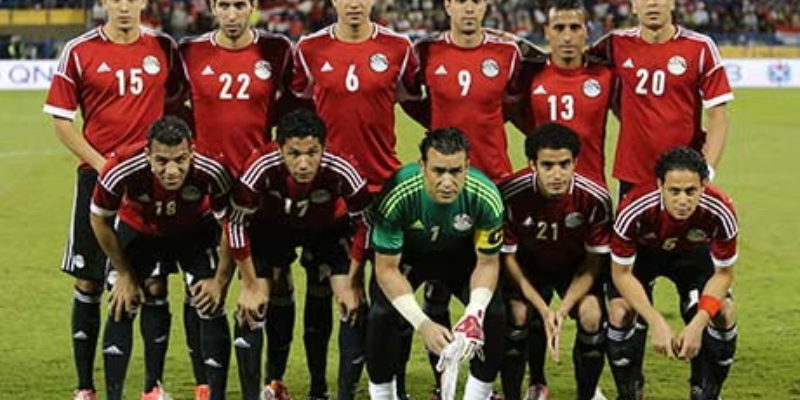The tale of Egypt’s national team is rich, turbulent, and full of drama. Yet amid the countless triumphs and heartbreaks, there is one match forever etched in the record books as their biggest loss in Egypt national team history. In this article, GypsyGoal will journey through time to uncover the story behind that defeat, place it in the broader context of Egyptian football, and explore how Pharaohs have rebounded.
The Heaviest Defeat: 11–3 to Italy, 1928

The biggest loss in Egypt national team history came at the 1928 Summer Olympics, when Egypt was thrashed by Italy 11–3 in Amsterdam.
That match still stands as the most lopsided defeat ever suffered by Egypt in an official international “A” match., no other match in the history of the Pharaohs has matched or exceeded an eight-goal margin.
Match Setting and Scoreline
- The fixture took place on 9 June 1928 in Amsterdam, as part of the Olympic football tournament.
- Italy was then a European powerhouse in football, and the Egyptians—still developing their international identity—found themselves overwhelmed by their northern Mediterranean rivals.
- The game turned into a rout: Italy found the net with ruthless efficiency, while Egypt’s defense collapsed under pressure. The margin of eight goals remains unmatched in their history.
Why It Was So Devastating
Several contextual factors deepen the sting of that result:
- Era and experience gap: Egypt’s national side was young and still forging its identity in global football. European teams had more systematic training, tactics, and exposure.
- Tournament pressure: The Olympics was a major stage, with national prestige riding on a show of strength. Facing a powerhouse like Italy amplified the pressure.
- Psychological blow: Conceding so many goals in one match broke morale, raising questions about defensive organization and tactical maturity.
Other Notable Heavy Losses

While the 11–3 defeat is unique, Egypt has endured other damaging losses through history. These don’t match the scale, but carry weight in their own right.
- 5–1 versus Italy, November 1953: A more modern era saw Egypt lose heavily in a World Cup qualifier against Italy.
- 6–0 versus Morocco, August 2024 (Olympics): Though not part of the senior A team record, Egypt were beaten comprehensively in Olympic competition.
- 6–1 loss to Ghana, October 2013 (friendly / World Cup push): Ghana dismantled Egypt as the Pharaohs’ campaign faltered. kipedia])
These losses, while painful, were less harsh in margin and often in more modern, better-prepared squads. But nothing quite echoes the magnitude of the 1928 shellacking.
Contextualizing Egypt’s Losses in National History

To fully grasp the lasting impact of that worst loss, we must see it in wider context.
Early Years and Growth
Egypt’s first international match was in 1920, losing 2–1 to Italy in Ghent during the Olympics. In just eight years, they returned to face Italy again on a similar stage—and endured the disastrous 11–3 result. Those early decades were formative for Egyptian football’s structure, style, and reputation.
Resilience, Redemption, and Regional Dominance
Despite the worst-ever loss, Egypt went on to become the most decorated nation in African football. The Pharaohs have won the Africa Cup of Nations seven times—a continental record. That ability to rebound.
Defensive Modernization and Tactical Maturity
After that crushing defeat, Egypt’s footballing philosophy evolved. Over time, defensive organization, structured coaching, and exposure to international play reduced the frequency of mass-goal losses. While occasional heavy losses still happen, they’re rarer and less catastrophic.
Why That Match Remains the Benchmark
Why hasn’t any future result surpassed 11–3 as the biggest loss in Egypt national team history? Several key reasons:
- Evolution of football balance
- As national teams matured, disparities narrowed. Even powerhouses rarely destroy lesser teams by more than five or six goals, especially at high levels.
- Improved defensive systems
- Modern tactics, fitness, scouting, and match preparation limit risks of being exposed to such dramatic collapses.
- Selective scheduling
- Egypt more often faces teams of comparable strength, rather than unmatched European juggernauts in their prime.
Thus, that 1928 scoreline remains a cold record that stands the test of time.
Lessons. Here’s what Egypt and fans can extract from that darkest chapter:
- Benchmark for growth
- The 11–3 defeat is a stark reminder of how far the national team has come. It provides perspective on the progress made in organization, tactics, and mentality.
- Motivation and identity
- Rather than erasing it, embracing such memories helps embed resilience. The Pharaohs today use historical struggles to fuel pride in redemption.
- Psychology under pressure
- That collapse under pressure teaches future generations that mental strength must accompany physical preparation.
Conclusion
The biggest loss in Egypt national team history looms large not merely as a statistical oddity, but as a defining moment in the narrative of Egyptian football. That 11–3 defeat to Italy in the 1928 Olympics remains unmatched in its severity—and yet serves as a foreshadowing of how much Egypt had to evolve. Today, when fans look for records, dramatic wins, or moments of heartbreak, GypsyGoal hopes this article helps them remember where the Pharaohs once fell—and how they rose again.
If you enjoyed this deep dive into Egypt’s darkest day, stay tuned to GypsyGoal for more: player biographies, match breakdowns, transfer news, and records across all nations. Want to explore Egypt’s biggest win, top scorers, or journey through World Cups? Let me know — I’m ready to guide you there next.



